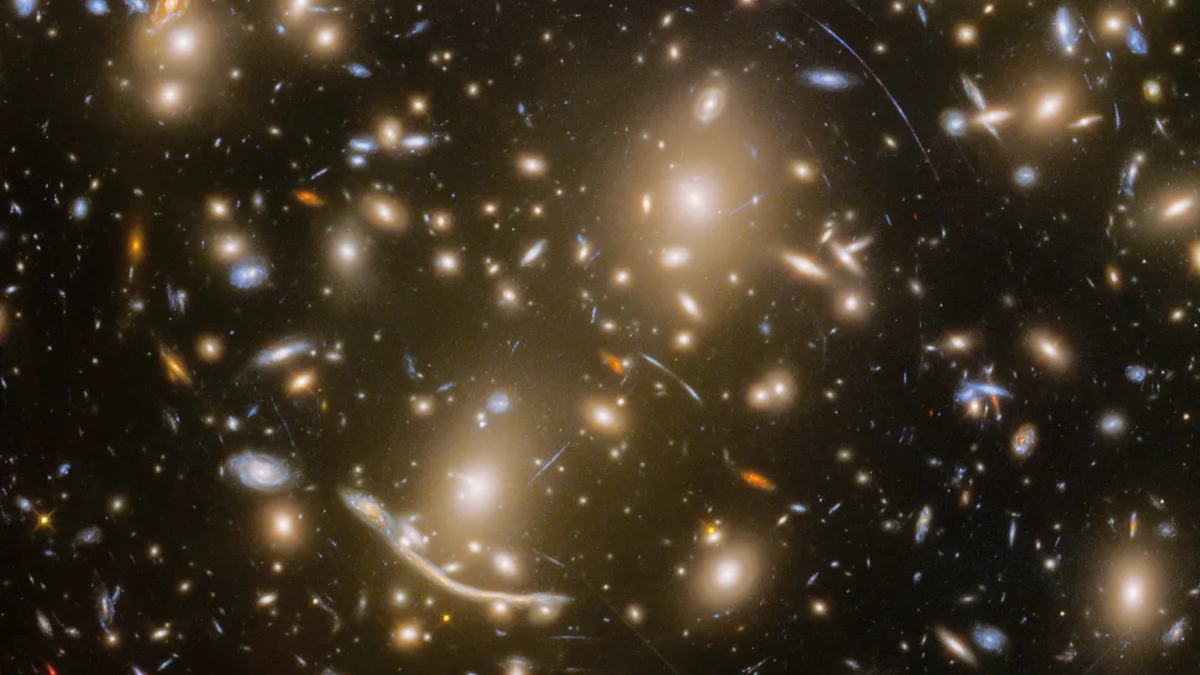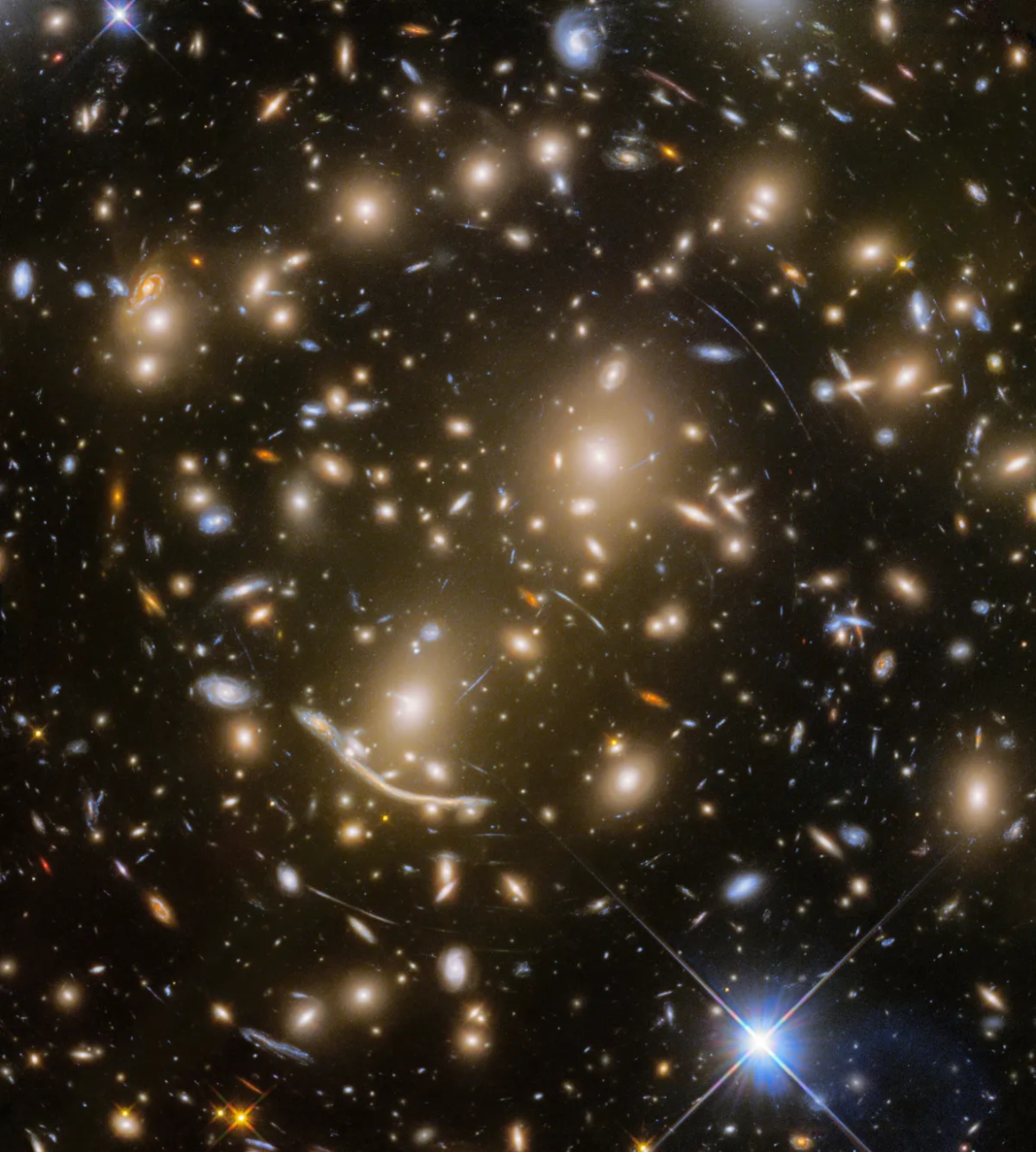The James Webb Space Telescope Finds a Record-Breaking Collection of Stars in Distant Galaxy

The James Webb Space Telescope (JWST) has recently captured images of 44 individual stars in a galaxy located 6.5 billion light-years away. This is a huge milestone because it was once thought impossible to observe individual stars in such a distant galaxy, similar to trying to see dust grains inside craters on the Moon through binoculars.
The discovery gives scientists the chance to study the behavior of dark matter, too. These 44 stars belong to a distant galaxy whose light has been stretched into a long arc called the Dragon Arc, located in the Abell 370 galaxy cluster.
This galaxy cluster, about 4 billion light-years away, causes gravitational lensing, bending the light from distant galaxies behind it, making them appear stretched and distorted. This effect allows astronomers to see faraway galaxies more clearly than before.
In 2022 and 2023, Fengwu Sun and his team at the Harvard & Smithsonian Center for Astrophysics discovered the stars while searching for a background galaxy in the Dragon Arc. The images revealed individual stars, a surprising find. The stars in this galaxy are red supergiants near the end of their lives, similar to the famous Betelgeuse star in Orion.

A key factor in this discovery is the gravitational lensing effect caused by Abell 370. The lensing distorted and magnified the light, helping to spot these stars.
The brightness of these stars also changed over time, causing them to twinkle, similar to how Christmas tree lights blink on and off. This effect allowed scientists to see the stars in greater detail and marks a major achievement for JWST’s capabilities.
The study, published on January 6 in Nature Astronomy, is another example of how the JWST continues to surprise astronomers with its incredible ability to observe the farthest reaches of the universe.
Have something to add? Let us know in the comments below!
